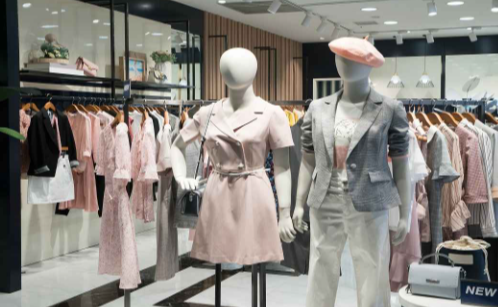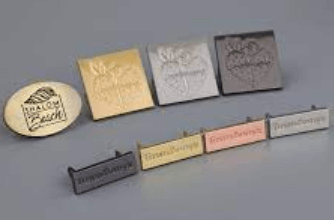How Revolutionary Textile Technologies Are Shaping the Future of Fashion

Key Takeaways:
- Understanding the transformative impact of advanced textile technologies on the fashion industry.
- Exploring the properties and benefits of modern textile fibers, including spandex material.
- Identifying the sustainability challenges and future opportunities within textile innovation.
Table of Contents:
- Introduction
- The Evolution of Textile Technology
- The Anatomy of Advanced Fibers
- High-Performance Textiles in Sportswear
- The Aesthetics of Modern Textiles
- Sustainability and Textile Innovations
- Impact on Fashion Industry Economics
- The Consumer Experience Transformed
- The Challenges and Future Innovations
- Conclusion
Revolutionary textile technologies are reshaping the fashion landscape, introducing innovations that blend style with sustainability. Advanced materials like spandex lead this transformation, offering unparalleled comfort and versatility.
These textiles, born from a fusion of creativity and scientific ingenuity, challenge traditional norms, providing garments with enhanced durability and performance. From eco-friendly fibers to cutting-edge production methods, every aspect of the supply chain is evolving to meet the demands of a changing world.
Manufacturers and designers are embracing these advancements, creating clothing that looks good and minimizes environmental impact.
As consumers increasingly prioritize sustainability, these innovations are crucial for the industry’s future. Integrating high-performance fibers and sustainable practices sets a new standard, ensuring that fashion remains at the forefront of innovation while contributing positively to the planet. Revolutionary textile technologies pave the way for a more sustainable and stylish future in this ever-evolving landscape.
Introduction
The fashion industry has always reflected its times, capturing the zeitgeist and evolving with it. One of the driving forces behind these changes is the technology used to create the fabrics we wear. Especially notable in this technological revolution is the development of textiles like spandex material, which have become ubiquitous in various clothing types due to their unmatched comfort and flexibility. This marriage of form and function is a testament to the ingenuity that constantly reshapes our material world.
The Evolution of Textile Technology
Since the invention of the wheel, technology has served as a marker of human progress, and the textile industry is no exception. The leaps from hand-weaving to automated machinery revolutionized how textiles are made and influenced social and cultural norms, enabling mass production and, consequently, mass consumption.
As we enter an era of sustainability and digitalization, we witness another pivotal shift. Fabrics are engineered to be more innovative in function and creation, focusing on reducing their environmental impact while maximizing their durability and longevity.
The Anatomy of Advanced Fibers
At a fundamental level, advanced textile fibers redefine what materials can do. These cutting-edge fibers, often utilizing complex chemical and mechanical processes, bring moisture-wicking, thermal regulation, and extreme tensile strength to the everyday wardrobe. Yet their significance goes beyond their technical prowess.
They symbolize a convergence of science and aesthetics, where the feel of a fabric is as critical as its function and where each fiber contributes to a larger narrative of material innovation and cultural change.
High-Performance Textiles in Sportswear
In an industry such as sportswear, where performance can hinge on the minutiae of a fabric’s qualities, the innovation of high-performance textiles is a game-changer. These materials help athletes push their limits by providing support and breathability where it matters most. Moreover, they have transcended the boundaries of the track and field to permeate daily life, offering an unprecedented combination of performance and comfort that informs a new standard for casual and professional attire alike.
The Aesthetics of Modern Textiles
As textiles’ capabilities expand, so does the canvas for designers’ creativity. The aesthetic possibilities afforded by these materials enable the creation of stunningly intricate and singular garments.
Fabrics are no longer just the medium for fashion; they’re an integral part of its message, with each thread woven into a larger story about beauty, innovation, and the endless pursuit of the exceptional.
Sustainability and Textile Innovations
The fashion industry’s environmental impact is not a fact to be taken lightly. As consumer awareness rises, the impetus for sustainable practices has become a clarion call within the textile sector. Designing eco-friendly materials is not just a trend but a necessity, leading the charge toward ethically sourced, biodegradable, and recyclable materials.
This forward-thinking approach is shaping the fashion industry’s future, one fiber at a time, making sustainability not just a feature of textiles but a fundamental characteristic.
Impact on Fashion Industry Economics
The ripple effect of advanced textiles on the economics of the fashion industry is profound. The cost savings can be significant by making manufacturing processes more efficient and reducing waste.
The advent of technologies such as 3D knitting and automated weaving has the potential to democratize high-quality fashion, enabling it to be more accessible and affordable for consumers around the world while also providing manufacturers with new avenues for growth and innovation.
The Consumer Experience Transformed
What does all this technological advancement mean for the end-user – the consumer? It’s the shopping and wearing experience transformation, where garments are tailored to fit the body and lifestyles. Fabrics that adapt to body temperature, repel stains, and retain their shape over time are no longer futuristic concepts – they’re today’s reality, offering practicality without sacrificing style and elevating the daily experience of clothing to new heights.
See Also: A Pet Owner’s Guide to Mini Goldendoodles
The Challenges and Future Innovations
Though the path of innovation seems without boundaries, constraints persist that challenge the industry’s march toward an ideal fusion of fashion and function. Each hurdle requires careful navigation and a pioneering spirit, from technical limitations within fiber creation to the intricacies of global supply chains.
Looking forward, the synergies of nanotechnology, biotech, and material science promise to further expand our wardrobe’s possibilities and transform fabrics into multifunctional platforms with boundless potential applications.
Conclusion
In conclusion, revolutionary textile technologies reshape the fashion landscape, blending innovation, sustainability, and style. From advanced fibers like spandex to eco-friendly materials, these innovations are driving the industry forward.
The fusion of creativity and scientific advancement has led to fashionable, functional, and environmentally conscious garments.
As the fashion world embraces these cutting-edge technologies, it paves the way for a more dynamic and inclusive future. Consumers can expect more comfortable, durable, and versatile garments while minimizing environmental impact.
With ongoing research and development, the potential for further breakthroughs is vast, promising even more exciting possibilities. Ultimately, these revolutionary textile technologies are not just shaping the future of fashion; they’re redefining it, ushering in a new era of style that is both forward-thinking and sustainable.




